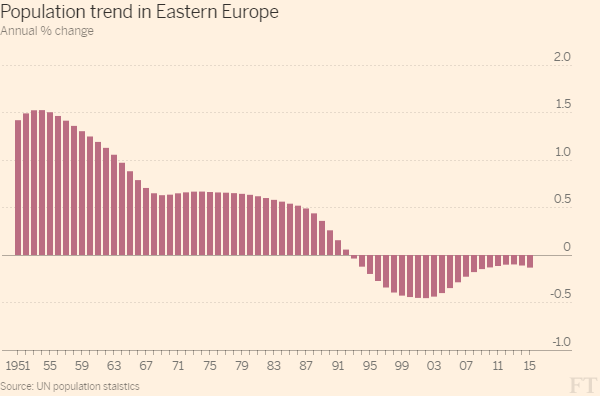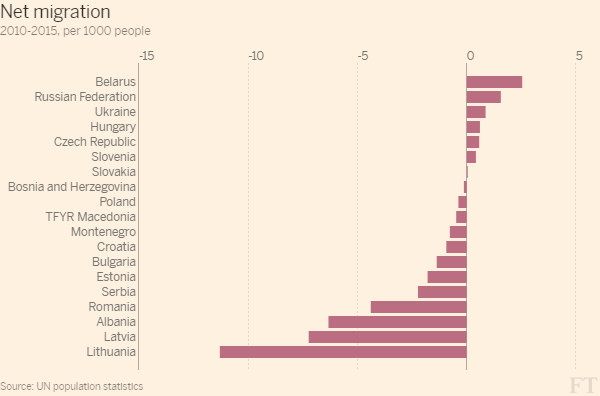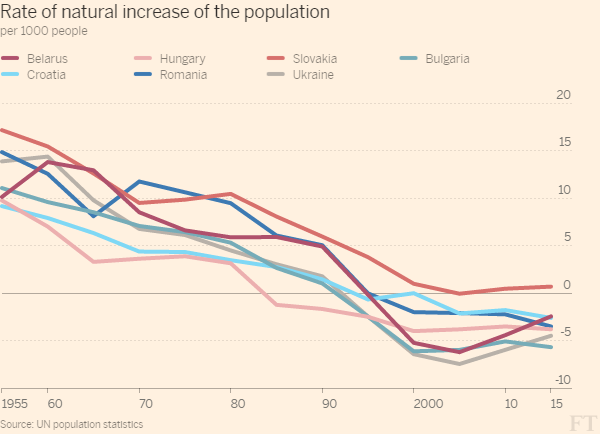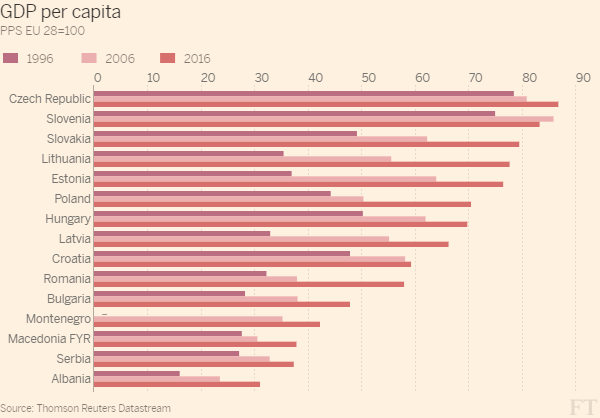Where are my dentists....?

How Did British Dental Care Get So Awful? | Novara Media
Even before the pandemic, Britain had a relatively low number of dentists: in 2019, the country had the fewest per 100,000 residents of any G7 country (53), substantially lower than countries like Italy (82) and Germany (86). Britain’s dentistry practices were already having to serve far more patients per dentist than other countries, and Covid-19 stretched them to breaking point.
After the pandemic began, and the lockdowns prevented dentist practices from operating (except to perform emergency treatment), the total number of NHS dentists fell by 4% in a single year; in total, the NHS has lost over 1,000 dentists since 2019.
Feels like we’d be lucky to even get this guy in this country.

Low Flying Fruit

By its composer and reviewers alike, ‘Pretty Boy’ has been likened to ‘A Forest’ by The Cure… In reality, much like the title track, ‘Pretty Boy’ has more in common with Stereophonics.
Oooof
Every Witch Way But Loose

Intimate Majesty: Witch King by Martha Wells - Every Book a Doorway
Witch King is the story of what happens when the world-changing adventures are over; what does the world do with its heroes, when it decides it doesn’t need them anymore? Intertwined is an earlier timeline, letting us trace the thread of how, exactly, our main character became capital-k Known – but it stops where most stories are just getting going. Wells carefully, deliberately avoids what most of us would think of as the real story, the big story, the dramatic and cinematic war against evil – we see its beginning and its aftermath, but not the war itself, not really.
Looking forward to reading this.
Feature: Handheld Face-Off - Nintendo Switch OLED Model Vs Steam Deck
kicking_kk
shared this story
from  Nintendo Life | Latest Updates: Nintendo Life | Latest Updates:
|
Which of these expensive monsters belongs on your credit card bill?
When Valve announced that it planned to make a handheld called the Steam Deck, it was immediately compared to the Nintendo Switch. You can understand that kneejerk reaction. They both let you play “proper games” on the go, they share a similar shape, and they would both have you muttering covetous obscenities if you saw someone pull one out on the train.
Realistically, though, this is an apples and oranges comparison. The Nintendo Switch OLED Model, the most expensive one, costs £310, and the system is essentially a slightly underpowered home console with legs. The Steam Deck costs £350-570 depending on the model, and is basically a gaming laptop chopped up and jammed into a plastic surfboard.
Read the full article on nintendolife.com

Revisitation 73: Shut Your Cakehole.
kicking_kk
shared this story
from  The Solar Pool - Blog: The Solar Pool - Blog:
|
…and doesn’t really go anywhere.
Plus, Megatron turns out to have a great future as a medium as he correctly predicts Starscream’s future and Roadbuster gets busted as I look at All Hail Megatron issue 11!
Run!
kicking_kk
shared this story
from  PNPArcade. PNPArcade.
|
 |
|
|
You are running. Escaping, stumbling on your own legs. Your short breaths are labored, shaky. Run! is a solo narrative game inspired by the slasher horror movie genre. You play as a survivor of a nefarious attack, and you are being chased by... something. Whatever that is, it is relentless and it wants you dead. Throughout 16 scenes, you play to collect Memories to try and piece together what is happening while you run for your life and try not to run out of Breath. CORE PREMISES
DETAILS
CREDITS
PNP DETAILS
|
|
What we've been playing
kicking_kk
shared this story
from  Eurogamer.net Latest Articles Feed. Eurogamer.net Latest Articles Feed.
|

Hello! Welcome back to our regular feature where we write a little bit about some of the games we’ve found ourselves playing over the last few days. This time: hexes, inventories, and space bombardment.
If you fancy catching up on some of the older editions of What We’ve Been Playing, here’s our archive.
I’ve loved Loot Rascals ever since I first saw it. The colour! The wonderfully gormless faces! The HEXES!
Jürgen Klopp declares Liverpool ‘perfect place’ for players to play
kicking_kk
shared this story
from  Liverpool | The Guardian. Liverpool | The Guardian.
|
- Manager wants side to ‘squeeze everything out of the season’
- Title-chasers visit in-form Newcastle in early Saturday kick-off
Jürgen Klopp believes he has only started creating a legacy at Liverpool and his new contract offers certainty to any player considering their future at “the perfect place”.
The Liverpool manager extended his Anfield career until 2026 on Thursday and has urged his quadruple-chasing team to “squeeze everything out of the season” with five matches remaining in the Premier League title race, an FA Cup final and a possible third Champions League final appearance in five campaigns to come. Irrespective of how the season ends, however, Klopp insists the next four years can yield even greater rewards for Liverpool than he has accomplished thus far.
Continue reading...Brik Font: Creating Type with Lego
kicking_kk
shared this story
from  kottke.org. kottke.org.
|
Craig Ward has been creating letterforms using Lego bricks and posting the results to Instagram. The ones I really love are the anti-aliased letters — reminds me of zooming all the way in to do detail work in Photoshop back when I was a web designer.




There is just something so satisfying about meticulously rendering digital artifacts in a physical medium like Lego.
Eastern Europe has the largest population loss in modern history
kicking_kk
shared this story
from  FT Data. FT Data.
|
Eastern European population is shrinking like no other regional population in modern history.
The population has declined dramatically in war ridden countries like Syria as well as in some advanced economies in peacetime, like Japan. But a population drop throughout a whole region and over decades has never been observed in the world since the 1950s with the exception of Southern Europe in the last five years and Eastern Europe over the last 25 consecutive years.
The UN estimated that there were about 292 million people in Eastern Europe last year, 18 million less than in the early 1990s, that’s more than the population of the Netherlands disappearing from the region. The fall corresponds to a drop of six per cent, give or take.
The contraction began after the fall of the Soviet bloc and accelerated until the early 2000s when it began to slow down.
Emigration
Emigration is one of the main reasons behind the decline. Eastern Europeans migrated to Western Europe, enticed by the prospect of higher earnings and better welfare systems. The main destinations for Poles, Latvians and Lithuanians were the UK and Ireland. Estonians left for Finland, Romanians went to Italy and Spain. More recently, Norway has emerged as a popular destination.
But this is not only a story of emigration made possible by the enlargement of the European Union. People from the region had begun emigrating even before Accession, and countries that are not part of the union have also seen a strong outflow.
Romania, for example, lost 9 per cent of its population in the fifteen years to 2005. In 1990 alone, nearly 100,000 Romanian citizens settled permanently abroad, with similar figures in the following few years. According to an OECD report, in the early days Romanian emigration largely concerned ethnic minorities. Most recently, it’s been job seekers. By 2007- the year in which Romania joined the EU- the majority of Romanian emigrants had already left the country.
Similarly, Bulgaria- which joined the EU in the same year- had a net migration rate of over eight per thousand in the first half of the 1990s, which progressively decreased to just over 1 per thousand in the last five years.
Albania, which is not an EU member, experienced an even larger outflow of migrants.
Falling fertility
Those who stayed started having fewer children. Eastern European women had an average of 2.1 children each in the late eighties. Ten years later this had dropped to 1.2.
Economic and political uncertainty in the post-Soviet era had a significant effect on fertility rates, along with the absence of an adequate welfare system.
Although other countries, like Germany, experienced a similar drop in fertility, the effect is much bigger in countries which do not have similar levels of immigration. The result is that from the mid-1990s in most Eastern European countries deaths outnumbered births.
Institutions have started firing alarm bells
When the OECD looked into the impact of emigration in the Baltic and Eastern European countries it raised alarm over the long-term economic impact:
“While this [emigration] served as a safety valve in a time of poor employment opportunities and led to high levels of remittances, the longer term implications appear less positive: smaller working-age population, loss of educated youth, and skills shortages.”
The European Commission shares similar concerns. This is what it said of Romania:
“Strong outward migration, including of the highly-skilled workers, coupled with an ageing population represent a challenge to support a competitive economy.”
It is Eastern European countries which will suffer the steepest drops in the size of working-age population within Europe, according to the European Commission. By 2060 they will have the highest “old age dependency ratios”- meaning the proportion of older, inactive citizens relative to workers – in the region.
Policies are not helping much
Most Eastern European countries took measures to reverse these trends in fertility and emigration, with poor results. Poland gave cash benefits to those who had two or more children, one of many family policies trashed by Oxford University.
“The majority of extant family policies in CEE countries suffer from a variety of shortcomings that impede them from helping to generate optimal family welfare and to provide conditions for cohort fertility to increase,” the study says.
The OECD delivered a similar verdict for policies aimed at making emigrants return:
“Return policies have met with limited success (..). Job fairs aimed at emigrants from Romania did not lead to many returns. Polish programmes to bring back emigrants were stymied by insufficient planning, by negative economic conditions and by the requirement not to favour returnees over non-migrants.”
The narrowing of the wealth gap – more effective
Most Eastern European economies are growing at an incredibly rapid pace, largely because they’re catching up.
What this means is that the difference in GDP per capita with Western Europe is narrowing. Broadly speaking, improving conditions in the region should reduce the incentives to emigrate. Better job opportunities and higher wealth should also lead to higher fertility rates.
The GDP per capita of the Czech Republic, Slovenia and Slovakia is now about eighty per cent or over that of the European Union. It used to be 50 per cent in Slovakia in the mid-1990s.
All these countries have seen their populations expand in the last decade.
But in poorer countries like Romania, Bulgaria, and Albania the size of the population is still declining.
The best way to win an argument
kicking_kk
shared this story
from  Mind Hacks: Mind Hacks:
|
How do you change someone’s mind if you think you are right and they are wrong? Psychology reveals the last thing to do is the tactic we usually resort to.
You are, I’m afraid to say, mistaken. The position you are taking makes no logical sense. Just listen up and I’ll be more than happy to elaborate on the many, many reasons why I’m right and you are wrong. Are you feeling ready to be convinced?
Whether the subject is climate change, the Middle East or forthcoming holiday plans, this is the approach many of us adopt when we try to convince others to change their minds. It’s also an approach that, more often than not, leads to the person on the receiving end hardening their existing position. Fortunately research suggests there is a better way – one that involves more listening, and less trying to bludgeon your opponent into submission.
A little over a decade ago Leonid Rozenblit and Frank Keil from Yale University suggested that in many instances people believe they understand how something works when in fact their understanding is superficial at best. They called this phenomenon “the illusion of explanatory depth“. They began by asking their study participants to rate how well they understood how things like flushing toilets, car speedometers and sewing machines worked, before asking them to explain what they understood and then answer questions on it. The effect they revealed was that, on average, people in the experiment rated their understanding as much worse after it had been put to the test.
What happens, argued the researchers, is that we mistake our familiarity with these things for the belief that we have a detailed understanding of how they work. Usually, nobody tests us and if we have any questions about them we can just take a look. Psychologists call this idea that humans have a tendency to take mental short cuts when making decisions or assessments the “cognitive miser” theory.
Why would we bother expending the effort to really understand things when we can get by without doing so? The interesting thing is that we manage to hide from ourselves exactly how shallow our understanding is.
It’s a phenomenon that will be familiar to anyone who has ever had to teach something. Usually, it only takes the first moments when you start to rehearse what you’ll say to explain a topic, or worse, the first student question, for you to realise that you don’t truly understand it. All over the world, teachers say to each other “I didn’t really understand this until I had to teach it”. Or as researcher and inventor Mark Changizi quipped: “I find that no matter how badly I teach I still learn something”.
Explain yourself
Research published last year on this illusion of understanding shows how the effect might be used to convince others they are wrong. The research team, led by Philip Fernbach, of the University of Colorado, reasoned that the phenomenon might hold as much for political understanding as for things like how toilets work. Perhaps, they figured, people who have strong political opinions would be more open to other viewpoints, if asked to explain exactly how they thought the policy they were advocating would bring about the effects they claimed it would.
Recruiting a sample of Americans via the internet, they polled participants on a set of contentious US policy issues, such as imposing sanctions on Iran, healthcare and approaches to carbon emissions. One group was asked to give their opinion and then provide reasons for why they held that view. This group got the opportunity to put their side of the issue, in the same way anyone in an argument or debate has a chance to argue their case.
Those in the second group did something subtly different. Rather that provide reasons, they were asked to explain how the policy they were advocating would work. They were asked to trace, step by step, from start to finish, the causal path from the policy to the effects it was supposed to have.
The results were clear. People who provided reasons remained as convinced of their positions as they had been before the experiment. Those who were asked to provide explanations softened their views, and reported a correspondingly larger drop in how they rated their understanding of the issues. People who had previously been strongly for or against carbon emissions trading, for example, tended to became more moderate – ranking themselves as less certain in their support or opposition to the policy.
So this is something worth bearing in mind next time you’re trying to convince a friend that we should build more nuclear power stations, that the collapse of capitalism is inevitable, or that dinosaurs co-existed with humans 10,000 years ago. Just remember, however, there’s a chance you might need to be able to explain precisely why you think you are correct. Otherwise you might end up being the one who changes their mind.
This is my BBC Future column from last week. The original is here.

Why Octopus Arms Don’t Get Tangled
kicking_kk
shared this story
from  Not Exactly Rocket Science: Not Exactly Rocket Science:
|
If you cut off an octopus’s arm, the severed limb will still move about for at least an hour. That’s because each arm has its own control system—a network of around 400,000 neurons that can guide its movements without any command from the creature’s brain.
The hundreds of suckers along each arm can also behave independently. If a sucker touches an object, it will change its shape to form a tight seal, and contract its muscles to create a powerful suction. It grabs and sucks, by reflex.
This setup allows the octopus to control its astonishing appendages without overly taxing its brain. Your arm has a small number of joints and can bend in a limited number of ways. But an octopus’s arm can create as many joints as it wants, in any direction, anywhere along its length. It can also extend, contract, and reshape itself. To control such infinitely flexible limbs, it needs to outsource control to the limbs themselves.
But what happens if one arm brushes past another? If the suckers grab objects on reflex, why aren’t octopuses constantly grabbing themselves by mistake?
To find out, octopus arm expert Benny Hochner teamed up with octopus sucker expert Frank Grasso.“Octopus suckers are undervalued in terms of their complexity,” says Grasso. “I’m one of their proponents. They’re really exquisite manipulation devices.”
Together with Nir Nesher and Guy Levy, the duo noticed that the suckers on a freshly amputated arm will never attach to another arm. Sure, they’ll grab skinned parts of an amputated arm or the bare flesh at the point of amputation, but not the arm itself. They’ll grab Petri dishes, but not those that are covered with octopus skin.

Common octopus. Credit: Pseudopanax.
Octopuses clearly have some kind of sucker-proof coating on their own skin. The team confirmed this idea by extracting chemicals from the skins of both fishes and octopuses, and applying these cocktails onto Petri dishes. They found that the octopus extract could block a sucker’s grabbing reflex but the fish extract could not.
“We all knew that octopuses are very dependent on chemical sensing but we haven’t done much research on this,” says Jennifer Mather from the University of Lethbridge, who studies octopus behaviour. “This paper will probably kick start it.”
Whatever the mystery chemical, it’s clear that octopuses can override its influence. The team showed that that living animals will occasionally grab amputated arms, even by the skin. Their brains can veto the reflexes of their suckers.
They can even tell if an amputated arm belonged to them or to another octopus. If they sensed another individual’s severed arm, they would often explore it, grab it, and hold it in their beaks in an unusual posture that the team called “spaghetti holding”. (Common octopuses will cannibalise their own kind, so a floating arm is fair game.) But when they sense their own severed limbs, they typically avoided it, and only rarely treated it like food.
“This gives us some idea of how octopuses might generate a sense of self—not by vision, which would be hopeless given their changeable appearance, but by chemical cues,” says Mather.
The octopus’s self-avoiding arms are a great example of embodied cognition—the idea that an animal’s body can influence its behaviour independently of its brain. As Andrew Wilson and Sabrina Golonka explain, “the brain is not the sole resource we have available to us to solve problems. Our bodies… do much of the work required to achieve our goals.”
The octopus… well… embodies this idea. Its brain governs many of its decisions and exerts control upon its arms, but the arms can do their own thing, including getting out of each others’ way. The animal doesn’t need to know the location of each of its arms to avoid embarrassing entanglements. It can let its arms do the work of evading each other.
This concept might be useful for designing robots. A typical robot, like Honda’s ASIMO, relies on top-down programs that control his every action. He can pull off pre-programmed feats like dancing or running, but he trips over even minor obstacles. He’s inflexible and inefficient. By contrast, Boston Dynamics’ Big Dog relies on embodied cognition. His springy legs are designed to react to rough terrain without needing new instructions from his central processor. (Thanks again to Wilson and Golonka for the examples.)
By studying the arms of octopuses, scientists may one day be able to design soft versions of Big Dog, pairing its flexible movements with an equally flexible chassis. Big Octopus, perhaps.
Reference: Nesher, Levy, Grasso & Hochner. 2014. Self-Recognition Mechanism between Skin and Suckers Prevents Octopus Arms from Interfering with Each Other. Current Biology. http://dx.doi.org/10.1016/j.cub.2014.04.024
More on octopuses:
- The mimic octopus (my first ever post)
- Octopus carries around coconut shells as suits of armour
- Death in the octopus’s garden
- Scientists solve millennia-old mystery about the argonaut octopus
- Octopuses and squids can switch camouflage mode to stay invisible in the twilight zone
- How to tell Wonderpus Joe from Wonderpus Bob

8 best iPhone and iPad family games to play with your kids
kicking_kk
shared this story
from  Pocket Gamer | www.pocketgamer.co.uk | Latest additions (iPhone): Pocket Gamer | www.pocketgamer.co.uk | Latest additions (iPhone):
|
 Unless you’re a being constructed out of pure money, the chances are you won’t have more than one or two iOS devices in your household.
So, if you then have children, you’re hit with a double whammy.
In the first instance, you won’t be able to afford multiple mobiles any longer. In the second instance, your offspring will be swiping your expensive toys off you to jab them with their sticky f…
Unless you’re a being constructed out of pure money, the chances are you won’t have more than one or two iOS devices in your household.
So, if you then have children, you’re hit with a double whammy.
In the first instance, you won’t be able to afford multiple mobiles any longer. In the second instance, your offspring will be swiping your expensive toys off you to jab them with their sticky f…![]()
Exercise During Pregnancy Benefits Mom—And Baby, Too
kicking_kk
shared this story
from  All Articles | Discover Magazine. All Articles | Discover Magazine.
|
When Linda May went in to see her obstetrician during her first pregnancy, he told her she probably shouldn’t jump, run, or even walk. But May, an exercise physiologist who studies pregnant women and their babies, knew a thing or two about the positive ways that being active can help a mom-to-be’s health. Women who exercise with baby on board have been known to have, among other things, lower risks of gestational diabetes and pregnancy-induced high blood pressure than those who don’t.
Since then, May and other researchers have discovered even more ways that prenatal exercise benefits not only an expectant mother, but her growing baby, too—sometimes for years into the future—as attendees learned at last week’s Experimental Biology 2014 meeting in San Diego.
Past Thinking
Decades ago, many more doctors gave similar advice to May’s obstetrician. Pregnancy was thought to be almost like an illness, a time when women needed to rest to protect themselves and their babies. In 1985, the American Congress of Obstetricians and Gynecologists came out with their first set of guidelines for exercise during pregnancy—guidelines, now considered conservative, that included suggestions like keeping strenuous activities to 15 minutes or less.
Since then, research has turned that idea on its head. Exercise is now thought to be—for most women with healthy pregnancies—a boon for the mother’s health, and for the baby she carries as well. Researchers are now starting to look even more closely at how exercise can influence a baby’s health in the womb and how these effects might translate into protection from future health problems.
Heart Health
It’s been known that those who exercise—including pregnant women—tend to have lower resting heart rates than those who don’t. Lower heart rates can be a sign of an efficient heart; high heart rates have been linked to greater risk of cardiovascular disease. May, now at East Carolina University in North Carolina, has long been interested whether benefits like this extended to baby. In a 2010 study, she and her colleagues collected a group of 26 pregnant women who reported that they’d been exercising three times a week for more than 30 minutes per session. When researchers brought the moms into the lab at 36 weeks, they found that the babies in their bellies, too, had lower heart rates than those carried by the moms they studied who weren’t regular exercisers.
In another study, presented at last week’s conference, May recruited 60 women at 13 weeks of pregnancy and brought them into the gym three times a week for either aerobic or mixed aerobic and weight training exercise. A control group of women came in to stretch and chat with researchers, keeping their heart rates low.
At 34 weeks—about six weeks before the babies’ due dates—the researchers checked in with the hearts within the wombs. Whether their moms were pumping iron or spinning, the babies in the bellies of exercising moms played along—their heart rates were lower and more variable, another sign of heart health, and pumped more blood with each beat than the tiny hearts inside moms in the control group.
The results indicate that exercise during pregnancy, far from harming the fetus, can be incredibly beneficial for both mom and baby. And timing matters: exercise during pregnancy, as opposed to pre-pregnancy fitness, seems to be doing something extra-special, May says. In this most recent study, about half of the group hadn’t exercised previously, and still saw similar effects on their babies’ hearts. In some of May’s past work, she collected data on moms’ pre-pregnancy body mass index and their resting heart rates, ages, and how much weight they gained in pregnancy. But these things didn’t explain the link between the fetus’s heart health and the exercise done in pregnancy.
Benefits at Birth, and Beyond
Such benefits to the heart may last into a child’s early life. Earlier this year, May and colleagues found that month-old infants still had higher heart rate variability if they had exercised along with their moms in utero. Another set of results from May’s group, not yet published, suggests that kids up to six years old still carry some of these early workouts with them: youngsters whose moms exercised while pregnant have higher “ejection fractions,” which indicates their hearts are pumping blood more efficiently.
As for what types of exercise bring the most benefit, May has found that aerobic exercise is great for the mom—lowering her heart rate and helping her gain less fat—but a mix of aerobics and strength training may be even better for the baby, although it’s not yet clear why, she says.
Growing hearts might be one of many things helped by an active mom. In his lab at the University of Kentucky, Kevin Pearson is looking at the connection between exercise and skin cancer in mice. He’s seen that mice that run during pregnancy have offspring that develop fewer skin tumors, later in life—a small but significant protective effect that he calls “an exciting first step.” Wei Zheng, a graduate student at Indiana’s Purdue University, and her colleagues found that baby rats had a 58 percent lower incidence of breast tumors if their mothers exercised.
Helping Moms Get Moving
Even with greater options at hand—from “Fit Pregnancy” magazine to prenatal yoga DVDs—many pregnant women aren’t exercising, in some cases because of lingering fear about harming their growing babies. Studies report that only about 10 to 30 percent of pregnant women are following recommended exercise guidelines—for healthy women, at least 30 minutes of moderate exercise most, if not all, days, according to the American Congress of Obstetricians and Gynecologists. (Of course, some women can’t safely exercise during part or all of their pregnancy, and active women should watch out for warning signs while exercising, such as bleeding or contractions.)
“It’s really important to start putting focus on how we can convey this message to pregnant women, get them to talk to their healthcare providers about exercise during their pregnancy, and get exercising,” says Amy McKenzie, a graduate student at the University of Connecticut who presented a study about pregnant women’s exercise habits at the conference.
Still, moms who aren’t able to exercise shouldn’t add, on top of other worries, the concern that their babies’ hearts won’t be healthy. May says that, instead, moms-to-be who can and do exercise—even a little bit—may be offering an added shield for their babies against later-in-life problems, which could be particularly important for those with a family history of heart disease.
Her next step is to analyze how an exercising mom might help shape her baby’s body composition. She’s following up on other studies that suggest babies born to exercising moms have lower body fat—benefits that can last into childhood. If that’s the case, exercise during pregnancy could be able to shape two major health problems, even before a baby is born. “Heart disease and childhood obesity,” she says. “If we can affect those two things, the public health benefit is huge.”
Image by milaphotos / Shutterstock
The post Exercise During Pregnancy Benefits Mom—And Baby, Too appeared first on The Crux.
Cost of living: UK vs US
kicking_kk
shared this story
from  FT Data: FT Data:
|
The New York Times asked yesterday whether Americans with a car in the driveway, a flat-screen television and a computer with an Internet connection can be described as “poor”.
In the United States, material goods – televisions, computers and cars – are at their most affordable in ten years, all having steadily dropped in price since 2005.
However, the cost of items that have traditionally helped pull Americans out of poverty – education, childcare and healthcare – have become far more expensive. Families’ everyday expenses also remain under strain from a steady increase in the cost of food and little change in the price of housing.
What would the same analysis of the cost of living look like in the UK?
We created a UK version of the chart in the New York Times’ story, using real prices calculated from the British consumer price index. The story was pretty similar:
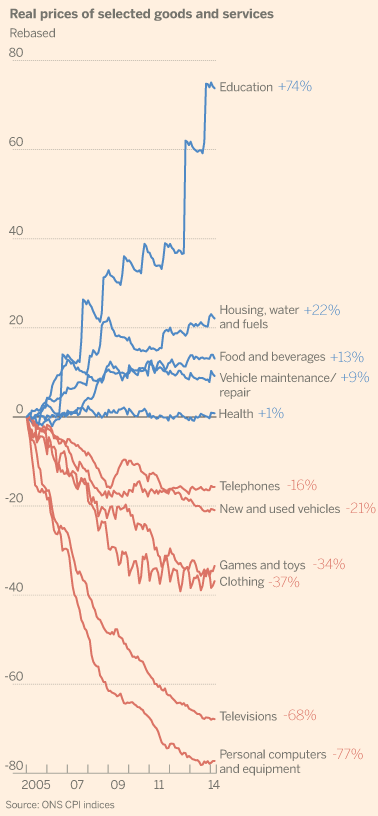
The most visible change is the rise in the cost of education – which has risen by more proportionally in the UK than in the US.
Education in Britain is 74 per cent more expensive in 2014 than it was nine years ago. The two sudden spikes shown in the chart reflect the increase in maximum university fees to £9,000 per year beginning in 2012, and more universities charging these top-end fees the following year.
Beyond education though, a six-month pattern in the fluctuating price of clothes can also be seen reflecting Christmas and summer sales, while the implementation of Labour’s car scrappage scheme in 2008 precipitated a drop in the price of vehicles. The same year, commodity price spikes also caused a hike in the real price of food and fuel.
It’s worth noting though that the UK definitions of the items included in each category in the basket of goods used to measure inflation differ slightly from their US equivalents – particularly for healthcare and housing.





